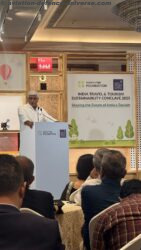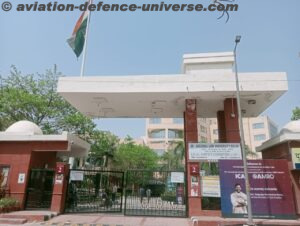The signing took place in the presence of President U Thein Sein, Vice-Presidents Sai Mauk Kham and U Nyan Tun, besides international witnesses from the United Nations, the European Union, China, India, Thailand and Japan were present at the event. Aung San Suu Kyi, the leader of the National League for Democracy and the most popular Burmese, was conspicuous by her absence.
The internal conflict in Myanmar refers to a series of civil conflicts within Myanmar that began after the country became independent from the United Kingdom in 1948. The conflict has been described as one of the world’s “longest running civil wars”.
Many of the earliest insurgencies were instigated by far-left insurgent groups and the Karen National Union (KNU); the KNU fought for an independent Karen State. More ethnic rebellions began in the early 1960s, after the central government refused to consider becoming a federal government. By the early 1980s, most politically motivated armed insurgencies had largely disappeared, while ethnic-based insurgencies continued. Many insurgent groups have made peace negotiations and truces with successive military governments since 1962; however, most of these negotiations did not result in any demands from the insurgent groups being met.
Speaking at the signing ceremony, President U Thein Sein underlined the event as a historic and significant one, saying that the road to future peace in Myanmar is now open. “Reform would not succeed without peace,” he said, adding that sustainable and lasting peace in the country cannot be achieved through ceasefire alone.
Today, the strongest resistance group in Shan State is the Shan State Army (SSA) led by Sao Yawd Serk. The SSA maintains bases along the Shan-Thai border. The SSA signed a ceasefire agreement with the Thein Sein’s government on 2 Dec 2011. Under the new constitutional reforms in 2011, state level and union level ceasefire agreements were made with many rebel factions. 14 out of 17 of the largest rebel factions signed a ceasefire agreement with the new reformed government.

According to the Myanmar Peace Monitoring group, clashes between Kachin Independence Organization (KIO), its allies, and the government, has displaced hundreds of thousands of people, and create another severe humanitarian crisis in Kachin and northern Shan State. All of the 14 signatories wanted negotiations in accordance with the Pang Long Agreement of 1948, which granted self-determination, federalism and ethnic equality. However, under the new constitution, there was only a few clauses dedicated to minority rights, and therefore, the government discussed with the rebel factions with reference to the constitution. There was no inclusive plan or body that represented all the factions, and as a result, in resent, the KNU backed out of the conference and complained the lack of independence for each party within the ethnic bloc. However, most of the negotiations between the State Peace Deal Commission and rebel factions were formal and peaceful.
In April 2015, a draft Nationwide Ceasefire Agreement was finalized between representatives from sixteen insurgent groups, the Tatmadaw, and the government of Myanmar. In October 2015, the government announced that it will sign a permanent ceasefire agreement with eight different armed insurgent groups, including the Karen National Union (KNU). Unlike previous agreements, the government intends this ceasefire to be permanent, and putting an end to six decades of conflict.
UN Secretary-General Ban-ki-Moon welcomed this important step in advancing national reconciliation and consolidating the reform process in the country. The Secretary-General felicitates President Thein Sein for his leadership and notes that although some important groups have not yet decided to take this step, today’s signing reflects a recognition by leaders from the Government, as well as from the Ethnic Armed Organizations, of the people of Myanmar’s genuine aspiration to end long years of conflict and live together in peace.
The Secretary-General urged all stakeholders, signatories and non-signatories, to work together for a peaceful future in a constructive and forward-looking spirit. This will require cooperation, determination and a commitment to reinforce trust and overcome the grievances of the past. He underscores that only an inclusive and structured political dialogue as well as non-recourse to military action in all areas will help build the basis for sustainable peace on the ground. As a third party observer to the negotiations, the United Nations has witnessed the progress of the talks and commends the patience and perseverance shown by all sides. The Secretary-General expresses his hope that the new government formed after the 8 November elections will continue to move forward along the present path of negotiations, building on these understandings. The United Nations remains prepared to contribute to the next stage of the peace process in accordance with the unified expectations of all stakeholders.
The NCA text agreed on 6 August has a preamble and seven chapters, with 33 clauses and 86 sub-clauses containing 104 specific provisions and running to twelve pages in the English version. Key provisions are: Preamble. The text “recognises, reinforces and reaffirms” all previous agreements,reassuring the armed groups that the NCA will not supersede or replace bilateral ceasefires.
Basic principles include upholding the “non-disintegration of the union and of national solidarity, perpetuation of national sovereignty” (the “three main national causes” set by the old military regime). Their inclusion at insistence of the military, which wanted to make clear separatism or irredentism was unacceptable, was controversial. But this is balanced by citing “principles of democracy and federalism” as well as liberty, equality and justice and the “Panglong spirit” guarantees of equality and self-determination. Included among the “basic principles” is that diversity of the peoples and cultures is embraced, and Myanmar is “a secular state”. This differs somewhat from the constitution, which “recognises the special position of Buddhism as the faith professed by the great majority of citizens” but “also recognises Christianity, Islam, Hinduism and Animism”.46 Constitutional change would be required to give legal effect to the NCA formulation, which could be difficult in the current environment of Buddhist nationalism.

Specific provisions for all parties are set out prohibiting certain activities in ceasefire areas (attacks, reinforcement, recruitment, new bases, laying landmines, etc.), except under specified conditions or as agreed, as well as hostile propaganda or defamatory statements about the other party. There is also provision for joint cooperation on landmine clearance and administering rule of law in ceasefire areas. On troop deployment, there are provisions to avoid clashes, including immediate communication between opposing forces in case of direct contact; cooperation in demarcating base areas and agreement on their number; and limiting deployments to demarcated areas. Unarmed troops may travel freely; armed troops may only enter areas controlled by the other party with permission.
Provisions include prohibition on subjecting civilians to violence, sexual violence, degrading treatment, arbitrary detention, forced displacement or relocation, extortion, forced labour, land confiscation, looting, destruction of property or restrictions on free movement or access to education, health care, livelihood or hindering of religious or cultural activities, as well as joint efforts to improve livelihoods by development aid. Joint management of humanitarian aid is envisaged, including that government, ethnic armed groups and regional organisations will collectively coordinate and administer local and international help for internally displaced people (IDPs) or other populations suffering hardship; that any resettlement or return of IDPs will be voluntary, safe and dignified; and that the parties will cooperate in verification and resettlement of refugees.
All parties must notify their troops of NCA signature within 24 hours and its detailed provisions within five days, but the provisions on code of conduct, civilian protection and other military matters would not come automatically into force. Within fourteen days of signing, a first “Joint Implementation Coordination Meeting” will be convened to “define the exact time frames governing ceasefire related matters” and adopt rules and regulations “within one month of signing”.

No independent monitoring is provided. A “Joint Monitoring Committee” would be formed at the coordination meeting mentioned above to monitor compliance. It would have government and armed group representation along with “trusted and well-respected individuals”. The parties would jointly decide on “the role of representatives from foreign governments and international organizations” involved in the peace process, “either as observers, advisers or to provide necessary technical assistance” to the committee. Any necessary facts and data are to be given to the committee on request, “except information related to national defence and security”. Provision is also made for ethnic armed groups that sign to open liaison offices “in mutually agreed areas”, in addition to those stipulated in bilateral ceasefires.
India is not only a keen observer to this development but the NSA Ajit Doval represented the country at the signing ceremony. Any semblance of peace in Myanmar will make the North-East of India a little more stable than it has been. Myanmar watchers in India are skeptic about showing too much of enthusiasm over this accord and prefer to wait and watch till the election results are announced in November.
 The Myanmar government signed the Nationwide Ceasefire Accord (NCA) with eight out of the 15 ethnic armed groups, bringing a ray of hope to see peace in the near future. Among the eight groups are Kayin National Union, Kayin National Liberation Army – Peace Council, All Burma Students’ Democratic Front, and Chin National Front. The Kachin Independence Army, Shan State Army and United Wa State Army were among the groups refusing to sign.
The Myanmar government signed the Nationwide Ceasefire Accord (NCA) with eight out of the 15 ethnic armed groups, bringing a ray of hope to see peace in the near future. Among the eight groups are Kayin National Union, Kayin National Liberation Army – Peace Council, All Burma Students’ Democratic Front, and Chin National Front. The Kachin Independence Army, Shan State Army and United Wa State Army were among the groups refusing to sign. The Myanmar government signed the Nationwide Ceasefire Accord (NCA) with eight out of the 15 ethnic armed groups, bringing a ray of hope to see peace in the near future. Among the eight groups are Kayin National Union, Kayin National Liberation Army – Peace Council, All Burma Students’ Democratic Front, and Chin National Front. The Kachin Independence Army, Shan State Army and United Wa State Army were among the groups refusing to sign.
The Myanmar government signed the Nationwide Ceasefire Accord (NCA) with eight out of the 15 ethnic armed groups, bringing a ray of hope to see peace in the near future. Among the eight groups are Kayin National Union, Kayin National Liberation Army – Peace Council, All Burma Students’ Democratic Front, and Chin National Front. The Kachin Independence Army, Shan State Army and United Wa State Army were among the groups refusing to sign.






























































































































